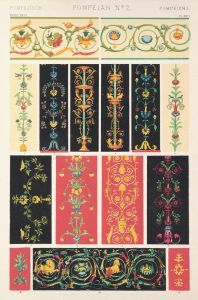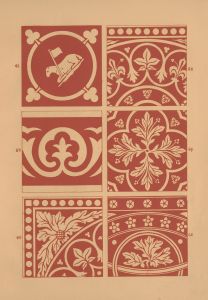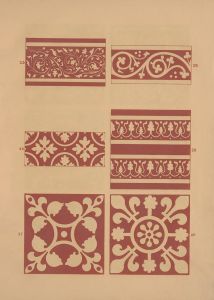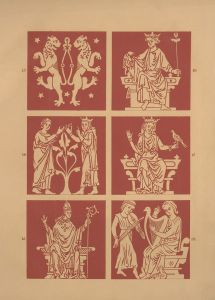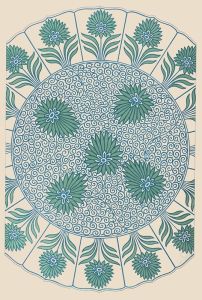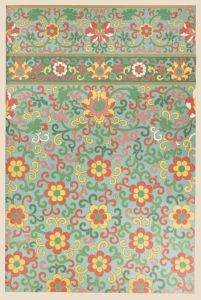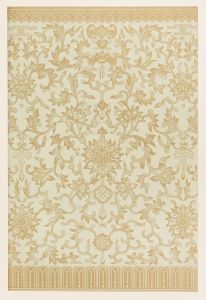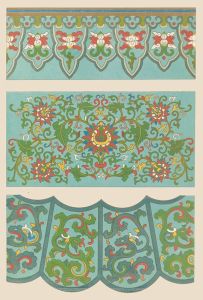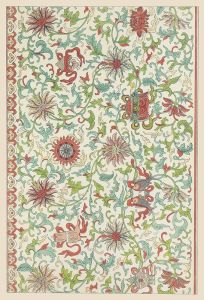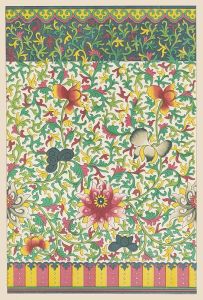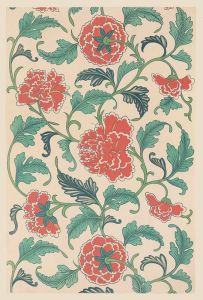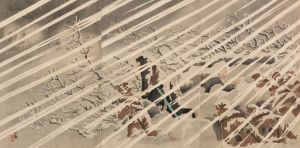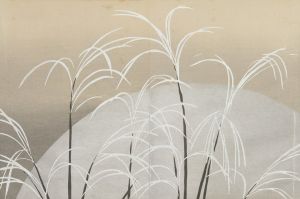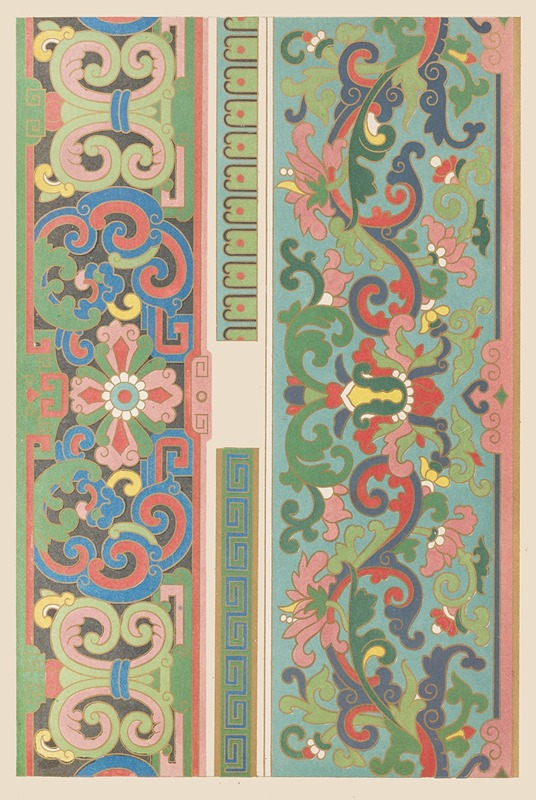
Examples of Chinese ornament, Pl.06
A hand-painted replica of Owen Jones’s masterpiece Examples of Chinese ornament, Pl.06, meticulously crafted by professional artists to capture the true essence of the original. Each piece is created with museum-quality canvas and rare mineral pigments, carefully painted by experienced artists with delicate brushstrokes and rich, layered colors to perfectly recreate the texture of the original artwork. Unlike machine-printed reproductions, this hand-painted version brings the painting to life, infused with the artist’s emotions and skill in every stroke. Whether for personal collection or home decoration, it instantly elevates the artistic atmosphere of any space.
"Examples of Chinese Ornament, Pl.06" is a plate from the influential design book "The Grammar of Ornament," authored by Owen Jones and first published in 1856. Owen Jones was a British architect and designer known for his work in color theory and his contributions to the decorative arts. His book aimed to provide a comprehensive collection of decorative patterns from various cultures around the world, serving as a source of inspiration for designers and architects during the 19th century.
"The Grammar of Ornament" is divided into 20 chapters, each focusing on a different cultural or historical style of ornamentation. The book includes patterns from ancient Egypt, Greece, Rome, and other civilizations, as well as designs from more contemporary sources at the time, such as the Renaissance and the Islamic world. The chapter on Chinese ornamentation showcases the intricate and symbolic designs characteristic of Chinese art and architecture.
Plate 06 specifically highlights the unique elements of Chinese decorative art. Chinese ornamentation is known for its use of symbolic motifs, vibrant colors, and intricate patterns. Common themes include natural elements such as flowers, birds, and mythical creatures like dragons and phoenixes, which often carry specific cultural meanings. For example, dragons are traditionally associated with power and strength, while phoenixes symbolize renewal and immortality.
Jones's depiction of Chinese ornament in Plate 06 reflects these themes, capturing the essence of Chinese aesthetics through detailed illustrations. The designs are typically symmetrical and balanced, emphasizing harmony and order, which are important principles in Chinese philosophy and art. The use of color in Chinese ornamentation is also significant, with red, gold, and green being prominent hues that convey prosperity, wealth, and growth.
Owen Jones's work was instrumental in introducing Western audiences to the richness of Chinese decorative arts. His accurate and respectful representation of these designs helped to foster a greater appreciation for non-Western art forms during a time when Orientalism was prevalent in European art and design. By including Chinese ornamentation in his book, Jones not only celebrated the diversity of global artistic traditions but also encouraged cross-cultural exchange and understanding.
"The Grammar of Ornament" remains a valuable resource for designers, historians, and artists today. Its detailed plates and insightful commentary continue to inspire those interested in the study of decorative arts and design history. Plate 06, with its focus on Chinese ornament, is a testament to the enduring beauty and complexity of Chinese artistic traditions, highlighting the intricate craftsmanship and deep cultural significance embedded in these designs.





